
Above: George Duthie and daughter Anna Lee Mershon at their family’s home in Indian Hills. The Duthie family pledged $500,000 to sponsor the Entry Plaza in memory of their wife and mother, Mary Lee Duthie. Photo by Valerie J. Smith
By Bob Hill
The best gardens will linger well past the lives of their creators, their presence constant and comforting reminders of the loved ones who planted them. They can also provide inspiration to give to the Louisville community for a future garden – to have $500,000 pledged in your name to help Botanica create its 23-acre Waterfront Botanical Gardens at Frankfort Avenue and River Road.
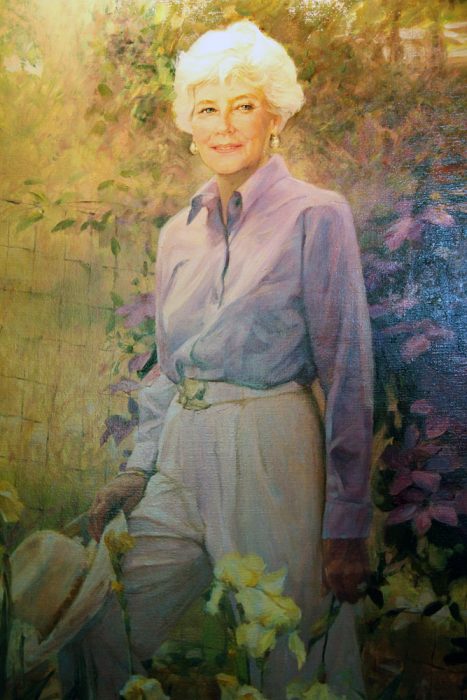
Mary Lee Duthie left such a wonderfully crowded life – and legacy. The garden at her home in Indian Hills still offers the parade of spring lilacs near the front entrance, the fragrant magnolia further down the drive, the oak-leaf hydrangeas tucked in a corner, the great burst of red azaleas around her house – the house she first designed on a blank piece of paper.
“Of course, when she got through,” said her husband, George, laughing at the memory, “it overlapped the lots on both sides. We kind of reduced it down a little bit.”
George and Mary Lee Duthie laughed a lot together in their 67 years of marriage. It was a life that grew to include four children, 12 grandchildren and 13 great-grandchildren – including the latest, to be born in November – and huge expanses of gardens.
They first met at Southern Methodist University in 1945. He was there from his home in Buffalo, N.Y., for U.S. Navy training; she lived in Dallas, only a few blocks away from the school.
“I met her at a dance,” said Duthie. “We kinda went together from there on.”
He was away on a ship for about six months. She waited for him. He graduated with an engineering degree in 1947. She graduated in 1948 with a degree in journalism. They skipped her graduation ceremony to get married that day.
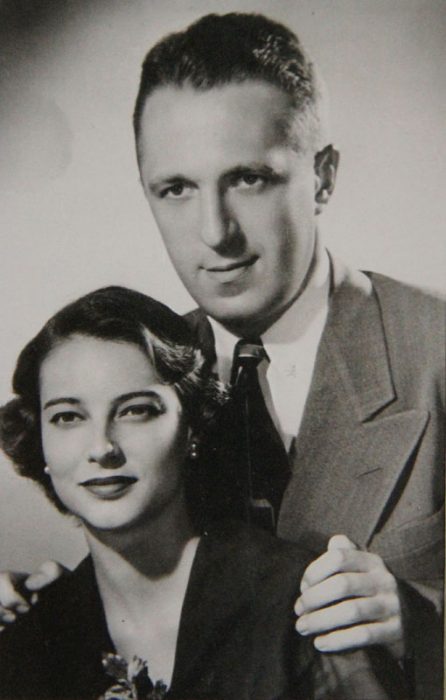
He went to work in Dallas, and moved to Louisville in 1953 to work at a company named Stewart Mechanical, staying with it for about 40 years, eventually owning it, then selling it in 1994. They built a house on Circle Hill Road in Seneca Park. The house soon filled with children, the yard with flowers. She couldn’t help it. Her mother was an avid gardener; the energy was in Mary Lee’s blood. “It was her consuming hobby,” said Duthie. “She had tons of gardens.”
But gardening was not her only interest. She became a Parent-Teacher Association president and a Girl Scout leader. She taught Sunday school at Beargrass Christian Church, became a deacon, volunteered as a driver for senior citizens, was active in garden clubs, delivered Meals on Wheels and for 18 years, with her daughter, Carolyn, she owned and operated two women’s clothing stores – M.C.’s, Inc.
She and George frequently traveled the country by car and the world by cruise ships, often taking family with them, always checking out the gardens.
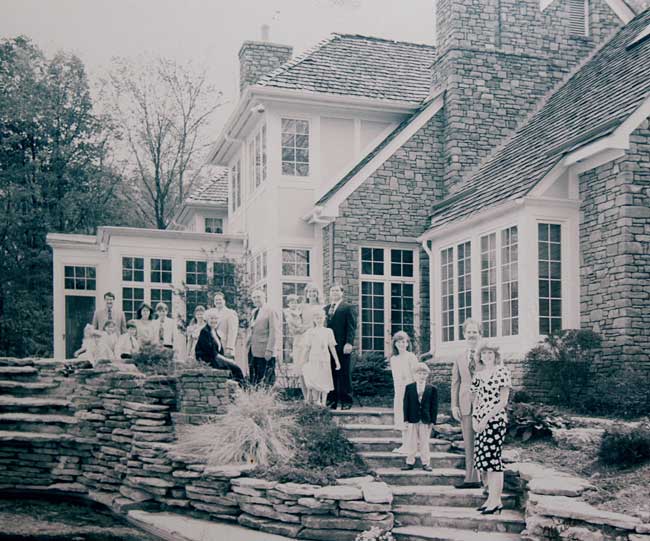
Then came the move in 1990 to Poplar Hill Court to the house she helped design, and a gardener’s dream – more than 2 acres of blank landscape canvas. The finished house is a tribute to elegance, charm and texture – wonderfully diffuse light from enormous windows, floral designs across sprawling couches, antiques at every turn, family portraits everywhere, staircases made to be overrun with grandchildren…and that marvelous portrait of Mary Lee Duthie in white slacks and a blue shirt, standing in the middle of her flowers.
Working outside – and she never hired a regular gardener to help – she dug in, out and over. “Except for some trees, it was totally bare,” said her husband. “She just did it all by feel. She loved kneeling in the dirt.”
For food, she grew tomatoes, peppers, squash and black-eyed peas. For color, she dug in bulbs and planted roses, peonies, azaleas, coleuses, columbines, clematises, hardy begonias, geraniums, asters and irises. For texture, she planted spruce and pine trees, Japanese maples, hemlocks and yews. Above all towers that majestic oak tree that must be hundreds of years old. For love and memories, she planted gardenias.
“I used to buy her gardenias for corsages when we dated,” said George.
For fun – and spirit – famed local sculptor Barney Bright created three nymphs dancing and playing music in the shadows. For all-season gardens, she added a greenhouse.
It’s all crowded around their home, framing it, hiding it a little, all coming together as one – house and yard; design and designer.
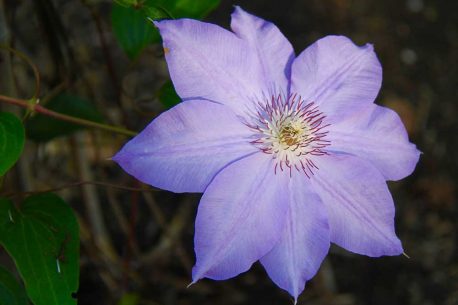 Behind the house are the stacked-stone walls, a pool below that, a trellised garden below that. The grandchildren and great-grandchildren walked the trails farther below, as did George and Mary Lee. And below that and off to the west – the directional source of that magnificent diffuse light that fills the house – is the endlessly flowing Ohio River.
Behind the house are the stacked-stone walls, a pool below that, a trellised garden below that. The grandchildren and great-grandchildren walked the trails farther below, as did George and Mary Lee. And below that and off to the west – the directional source of that magnificent diffuse light that fills the house – is the endlessly flowing Ohio River.
As age and illness slowed her gardening passion, her family moved many of the potted plants up onto a patio near the house, where she could better take care of them. Near the end, when she was mostly bedridden, they moved her to the front windows, where she could look out as sunlight played across her landscape, not to forget the inevitable wild turkeys and deer – one so familiar they named her Dolly.
Mary Lee Duthie died at age 87 on June 7 in her home – a location and fate to which her husband George has also pledged.
“It’s all her legacy,” he said of the house and yard. “She would be glad we are taking care of it. They took her out feet-first. I’ll be living here until they take me out feet-first.”
His eyes fill with tears as he speaks of his wife. He will be buried in Cave Hill Cemetery next to her – and below a statue of St. Francis, the patron saint of animals and the environment, which is now outside their home, but which will be moved to the cemetery.
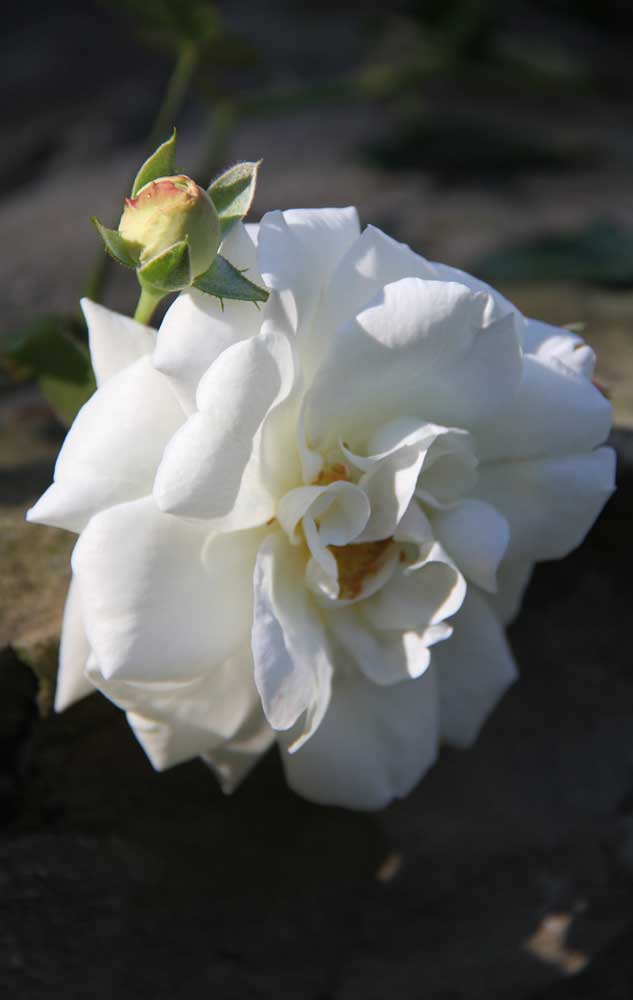 His desire to honor his wife with the $500,000 pledge to Botanica came while he was having a conversation at Audubon Country Club with Emil Graeser, who along with his wife, Nancy, has pledged a total of $450,000 in matching grants to the Waterfront Botanical Gardens. Their generosity brings the total raised for the site to $1.75 million in donations and formal pledges. Botanica also has an existing $1.8 million endowment, from which only interest income can be used, thanks to a gift from Helen Harrigan. The Duthie gift will specifically go to name the Mary Lee Duthie Entry Plaza just outside the Visitor Center as part of the roughly $15 million to $20 million required for Phase I of the project.
His desire to honor his wife with the $500,000 pledge to Botanica came while he was having a conversation at Audubon Country Club with Emil Graeser, who along with his wife, Nancy, has pledged a total of $450,000 in matching grants to the Waterfront Botanical Gardens. Their generosity brings the total raised for the site to $1.75 million in donations and formal pledges. Botanica also has an existing $1.8 million endowment, from which only interest income can be used, thanks to a gift from Helen Harrigan. The Duthie gift will specifically go to name the Mary Lee Duthie Entry Plaza just outside the Visitor Center as part of the roughly $15 million to $20 million required for Phase I of the project.
As they go through the house, her children are still finding notes and lists left behind by their mother – things to do, ideas to be carried out, ways to give back.
“We just wanted to memorialize her with one of the first things that will be built at the Waterfront Gardens,” said Duthie, who is hoping others may give to the Botanica cause. “She loved the Ohio River. She is still here…she is definitely still here.”
